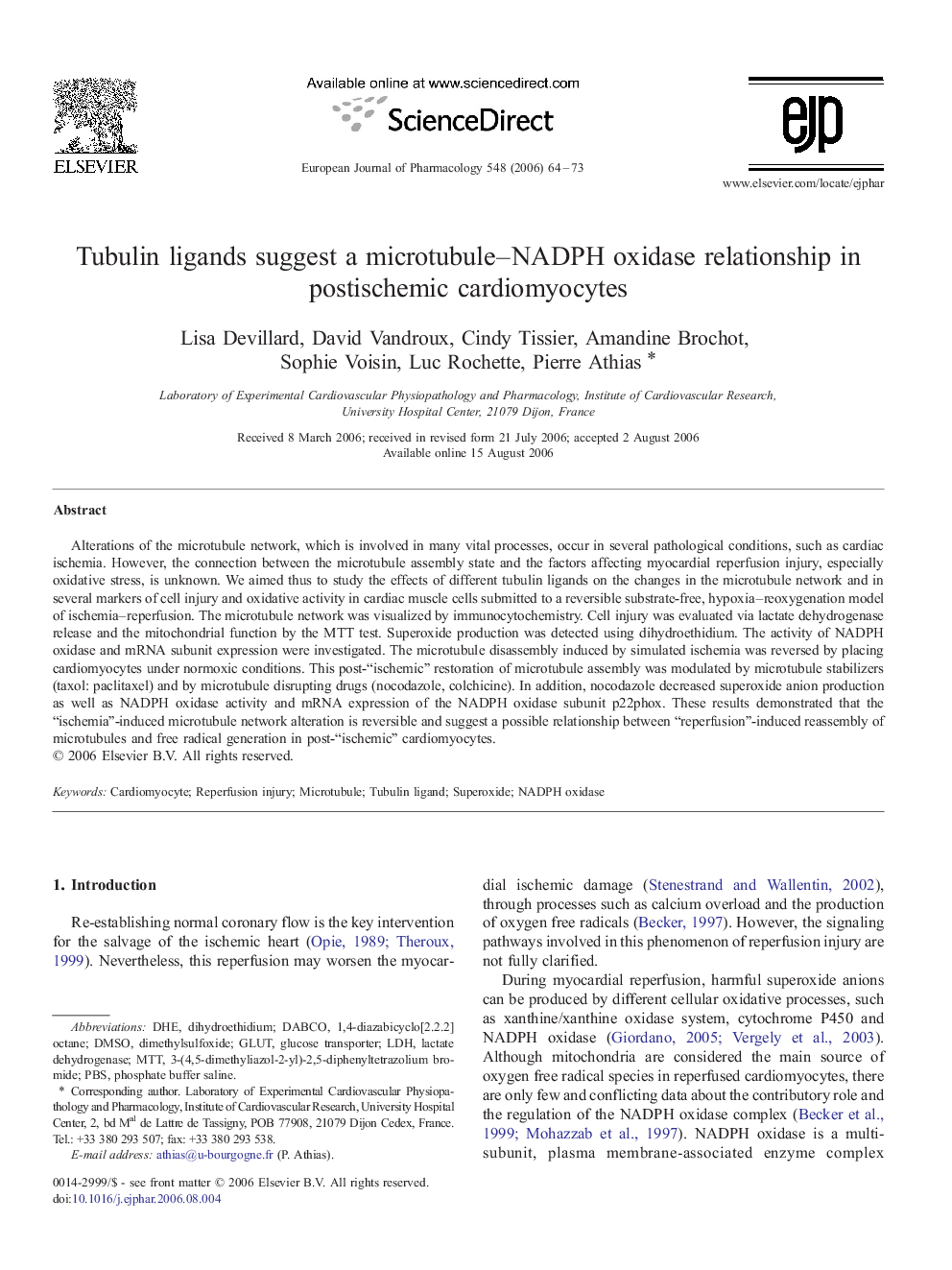| Article ID | Journal | Published Year | Pages | File Type |
|---|---|---|---|---|
| 2536818 | European Journal of Pharmacology | 2006 | 10 Pages |
Alterations of the microtubule network, which is involved in many vital processes, occur in several pathological conditions, such as cardiac ischemia. However, the connection between the microtubule assembly state and the factors affecting myocardial reperfusion injury, especially oxidative stress, is unknown. We aimed thus to study the effects of different tubulin ligands on the changes in the microtubule network and in several markers of cell injury and oxidative activity in cardiac muscle cells submitted to a reversible substrate-free, hypoxia–reoxygenation model of ischemia–reperfusion. The microtubule network was visualized by immunocytochemistry. Cell injury was evaluated via lactate dehydrogenase release and the mitochondrial function by the MTT test. Superoxide production was detected using dihydroethidium. The activity of NADPH oxidase and mRNA subunit expression were investigated. The microtubule disassembly induced by simulated ischemia was reversed by placing cardiomyocytes under normoxic conditions. This post-“ischemic” restoration of microtubule assembly was modulated by microtubule stabilizers (taxol: paclitaxel) and by microtubule disrupting drugs (nocodazole, colchicine). In addition, nocodazole decreased superoxide anion production as well as NADPH oxidase activity and mRNA expression of the NADPH oxidase subunit p22phox. These results demonstrated that the “ischemia”-induced microtubule network alteration is reversible and suggest a possible relationship between “reperfusion”-induced reassembly of microtubules and free radical generation in post-“ischemic” cardiomyocytes.
